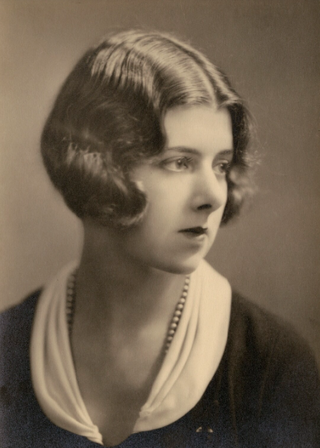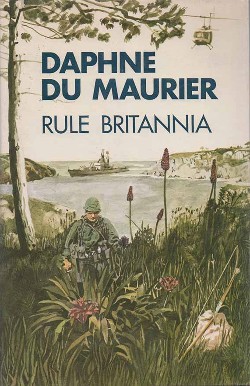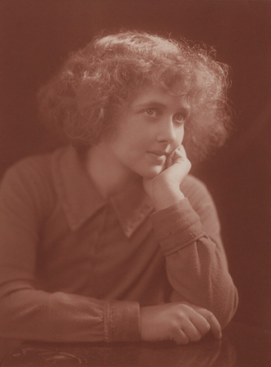
Dame Daphne du Maurier, Lady Browning, was an English novelist, biographer and playwright. Her parents were actor-manager Sir Gerald du Maurier and his wife, actress Muriel Beaumont. Her grandfather was George du Maurier, a writer and cartoonist.

George Louis Palmella Busson du Maurier was a Franco-British cartoonist and writer known for work in Punch and a Gothic novel Trilby, featuring the character Svengali. His son was the actor Sir Gerald du Maurier. The writers Angela du Maurier and Dame Daphne du Maurier and the artist Jeanne du Maurier were all granddaughters of George. He was also father of Sylvia Llewelyn Davies and grandfather of the five boys who inspired J. M. Barrie's Peter Pan.

Rebecca is a 1938 Gothic novel written by English author Daphne du Maurier. The novel depicts an unnamed young woman who impetuously marries a wealthy widower, before discovering that both he and his household are haunted by the memory of his late first wife, the title character.

Bunny Lake Is Missing is a 1965 British-American psychological mystery thriller film, directed and produced by Otto Preminger. Filmed in black-and-white widescreen format in London, it was based on the 1957 novel Bunny Lake Is Missing by Merriam Modell. It stars Carol Lynley as a mother searching for her missing daughter, Keir Dullea as her brother, and Laurence Olivier as the police officer investigating the case. The score is by Paul Glass and the opening theme is often heard as a refrain. The rock band the Zombies also appear in the film, in a television broadcast.

Sir Gerald Hubert Edward Busson du Maurier was an English actor and manager. He was the son of author George du Maurier and his wife, Emma Wightwick, and the brother of Sylvia Llewelyn Davies. In 1903, he married the actress Muriel Beaumont, with whom he had three daughters: writers Angela du Maurier (1904–2002) and Dame Daphne du Maurier (1907–1989), and painter Jeanne du Maurier (1911–1997). His popularity was due to his subtle and naturalistic acting: a "delicately realistic style of acting that sought to suggest rather than to state the deeper emotions". His Times obituary said of his career: "His parentage assured him of engagements in the best of company to begin with; but it was his own talent that took advantage of them."

Cumberland Terrace is a neoclassical terrace on the eastern side of Regent's Park in the London Borough of Camden, completed in 1826. It is a Grade I listed building.
William Comyns Beaumont, also known as Comyns Beaumont and Appian Way, was a British author, journalist, lecturer, and editor. Beaumont was a staff writer for the Daily Mail and eventually became editor of the Bystander in 1903 and then The Graphic in 1932.

Muriel Beaumont, Lady du Maurier was an English stage actress from 1898 until retiring in 1910. She was the wife of the actor and manager Sir Gerald du Maurier and mother of the writers Angela du Maurier and Daphne du Maurier and artist Jeanne du Maurier.

St John-at-Hampstead is a Church of England parish church dedicated to St John the Evangelist in Church Row, Hampstead, London.

Angela Busson du Maurier was an English actress and novelist who also wrote two volumes of autobiography, It's Only the Sister (1951) and Old Maids Remember (1965). Her sister was the novelist Daphne du Maurier, and her grandfather was George du Maurier, a writer and cartoonist.

Milton Hall near Peterborough, is the largest private house in Cambridgeshire, England. As part of the Soke of Peterborough, it was formerly part of Northamptonshire. It dates from 1594, being the historical home of the Fitzwilliam family, and is situated in an extensive park in which some original oak trees from an earlier Tudor deer park survive. The house is a Grade I listed building; the garden is Grade II*.

Rule Britannia is Daphne du Maurier's last novel, published in 1972 by Victor Gollancz. The novel is set in a fictional near future in which the UK's recent withdrawal from the EEC has brought the country to the verge of bankruptcy.

Sir James Cosmo Melvill was a British administrator who served as the last secretary of the East India Company.

Sir Noah Thomas FRS FRCP was a Welsh physician who was physician-in-ordinary to King George III. He was a fellow of the Royal Society and the Royal College of Physicians, and a Gulstonian lecturer.

James Cosmo Melvill was a British botanist and malacologist who collected plants in Europe and North America.

Jeanne du Maurier was an English artist. She was the third daughter of Sir Gerald du Maurier and Muriel Beaumont, and sister of writers Daphne and Angela du Maurier.

Gang Moor is a house on Whitestone Lane in Hampstead in the London Borough of Camden. It is listed Grade II on the National Heritage List for England.

Well Road is a street in Hampstead, England located in the London Borough of Camden. It runs westwards from Hampstead Heath to New End Square. Well Walk runs parallel to its south and the two are linked by Wells Passage. When the Hampstead Wells were in existence, a large pump room and assembly room were located on Well Walk, with the water supplied from the headspring on Well Road.























